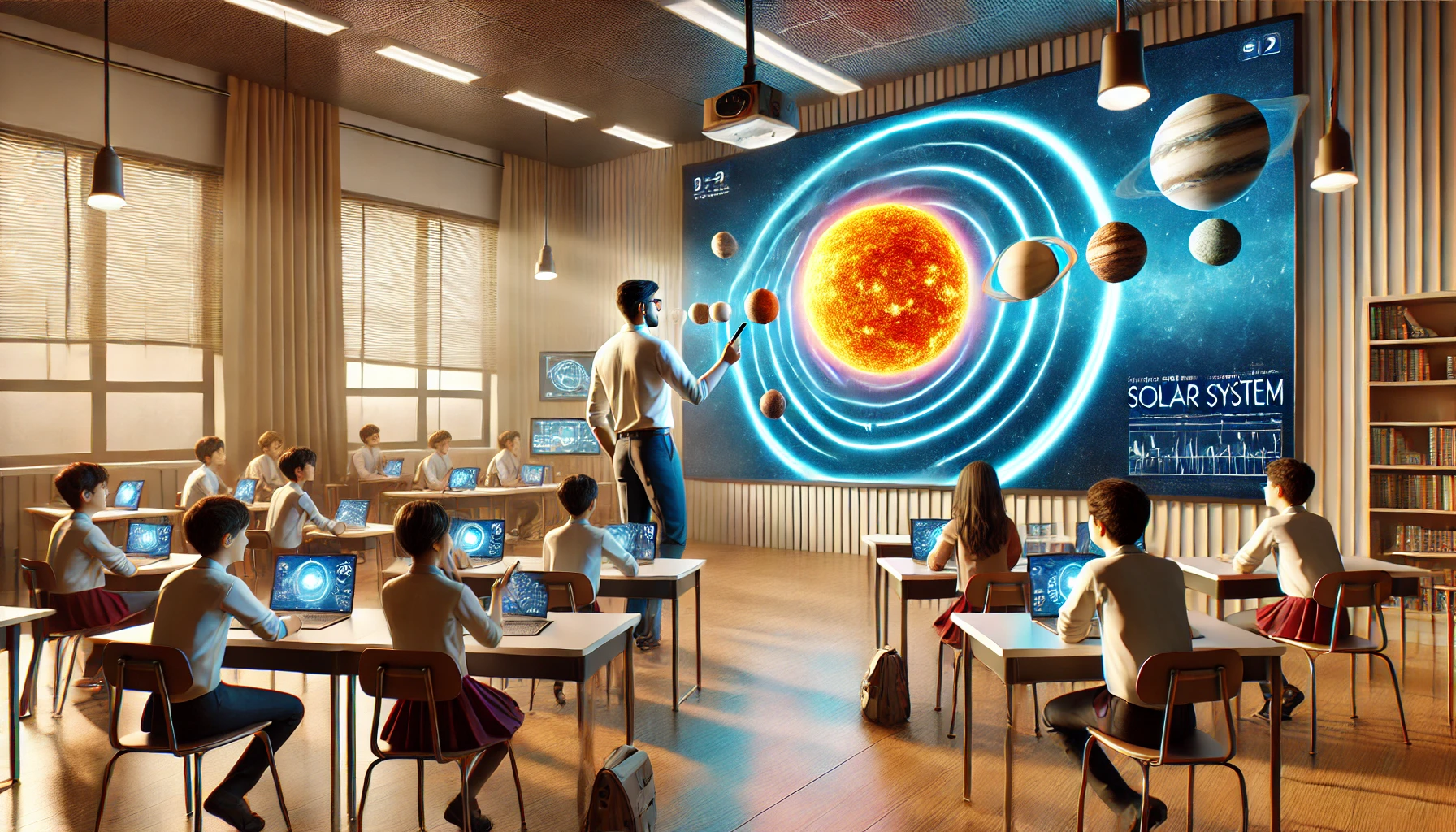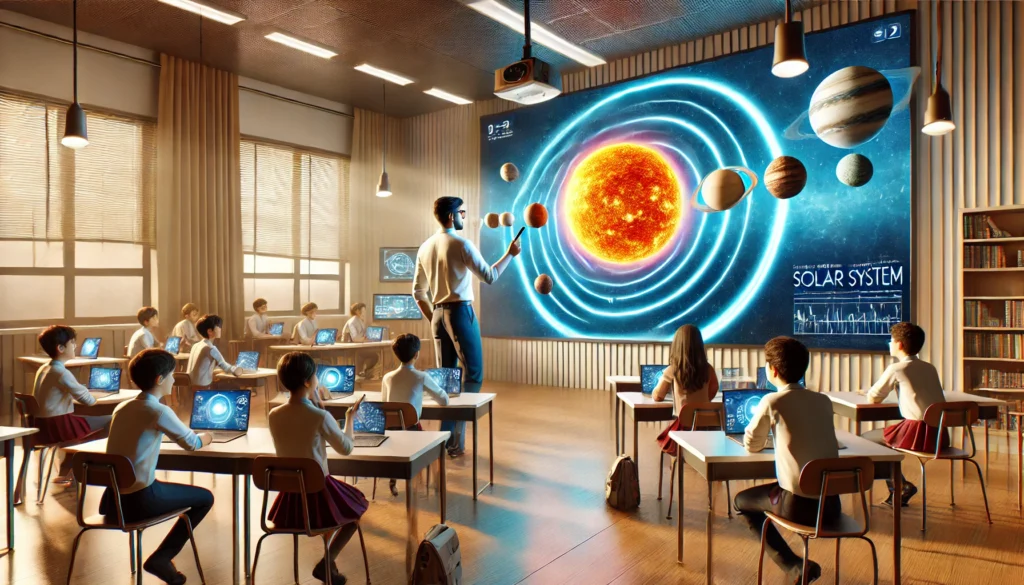SenseXR AR-VR Controller For Smartphone Buy Now
The Future of Education: How VR, MR and AR are Revolutionizing Learning


As technology continues to evolve, so too must the way we approach education. The traditional classroom setting, where students sit at desks and learn from textbooks or lectures, is becoming outdated. Today’s children are growing up in a world where digital tools are a natural part of their everyday lives. It’s time for education to catch up and embrace new trends that can revolutionize how students study and engage with the world around them.
Future of Education: AR, VR and MR
The future of education lies in immersive technologies like Virtual Reality (VR), Augmented Reality (AR), and Mixed Reality (MR). These tools offer a new way to experience learning that goes far beyond what traditional methods can offer. As the famous quote goes, “A picture is worth a thousand words,” and if we take that further, “A video is worth a thousand pictures.” But what if you could step into that video and experience everything first hand? With VR, MR, and AR, that’s exactly what students can do—immerse themselves in learning environments where they can interact with educational objects and concepts in 3D, making learning more engaging, interactive, and impactful.
What is XR?
Extended Reality (XR) is an umbrella term that covers VR, AR, and MR. It is the fusion of the physical and virtual worlds, allowing students to interact with their surroundings in ways that were previously impossible. VR creates fully immersive environments, transporting users to virtual worlds, while AR overlays digital content onto the real world. MR, on the other hand, merges the two by allowing interaction with both virtual and physical elements in real-time.
These technologies offer students the ability to experience learning in new ways. Imagine walking through ancient Rome, observing the architecture, or dissecting a virtual frog without the mess. Students can explore the depths of the ocean, visit the International Space Station, or even manipulate molecules in a virtual chemistry lab. These experiences are not just captivating—they make learning more effective by allowing students to visualize and interact with the material.
The Power of Immersive Learning
Research shows that immersive learning helps improve retention and engagement. In traditional classrooms, students may struggle to grasp complex concepts simply by reading or listening. VR, MR, and AR allow for multi-sensory learning, which activates more parts of the brain. This leads to better comprehension and memory retention. For example, instead of reading about the structure of the human heart, a student could explore a 3D model in VR, observing how blood flows and learning about each part of the heart through direct interaction.
This type of active learning empowers students to explore at their own pace, repeat lessons if needed, and engage with the subject matter in a way that feels personal to them. It shifts the focus from passive learning to active participation, which has been shown to significantly enhance understanding.
Transforming STEM Education
One area where VR and AR are already making a huge impact is STEM (Science, Technology, Engineering, and Math) education. These subjects can often be abstract and difficult to grasp through traditional methods. However, with immersive technologies, students can build complex structures, simulate physics experiments, or learn to code in ways that make abstract concepts tangible.
Enter SenseXR :
A cutting-edge AR/VR kit designed to bring this level of learning to life. SenseXR enables students to experience education like never before. Imagine studying astronomy by navigating through the stars or engineering by building virtual machines. With SenseXR, educational objects come to life in 3D, allowing students to engage with their lessons in a way that’s far more impactful than reading from a book or watching a 2D video.But that’s not all. SenseXR also empowers students to create their own AR and VR experiences through XR Block, a feature that introduces students to the world of coding and development. With XR Block, students can build immersive environments directly on their PCs, opening up endless possibilities for creativity and learning.
The Impact on Critical Thinking and Creativity
hinking and creativity. By encouraging students to solve problems in a virtual world, they learn to think outside the box. They can try different approaches without fear of failure—if something goes wrong, they can simply restart the simulation or try again from a different angle. This builds resilience and promotes innovative thinking, qualities that are crucial for success in the modern world.
VR and AR also provide opportunities for collaboration. Students can work together in a virtual environment, sharing ideas and building projects as a team, regardless of where they are physically located. This global approach to learning fosters communication and teamwork skills, which are invaluable in today’s interconnected world.
Bridging the Gap Between Theory and Practice
Another advantage of VR, MR, and AR is their ability to bridge the gap between theory and practice. Students can read about a topic, and then immediately apply that knowledge in a virtual setting. For instance, medical students can practice surgeries in a safe, controlled environment before working with real patients, while engineering students can simulate building bridges or designing electrical systems.
This hands-on experience is invaluable, as it prepares students for real-world challenges. By the time they graduate, they’ll have not only theoretical knowledge but practical experience that will give them a competitive edge in the job market.
Conclusion: A New Era of Education
The future of education is immersive, interactive, and boundless. As VR, AR, and MR continue to evolve, they will unlock new possibilities for students and educators alike. With tools like SenseXR and XR Block, we are just beginning to scratch the surface of what’s possible. Imagine a world where every student has access to these cutting-edge technologies, where learning becomes an adventure, and where the classroom knows no limits.
It’s time for education to step into the future and embrace the incredible potential that VR, AR, and MR have to offer. Let’s give our children the tools they need to not just learn—but to thrive in an ever-changing world.
Let’s Explore the SenseXR AR-VR Educational Controller for your child.